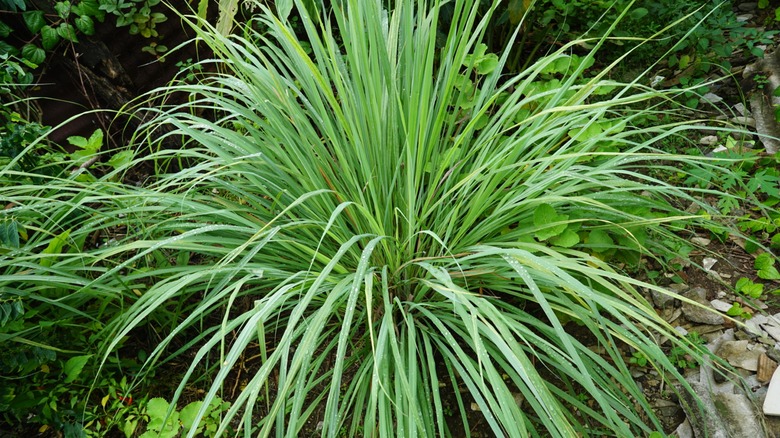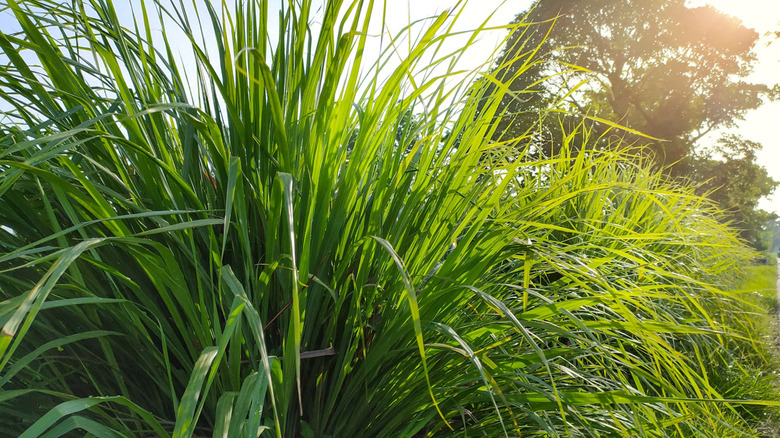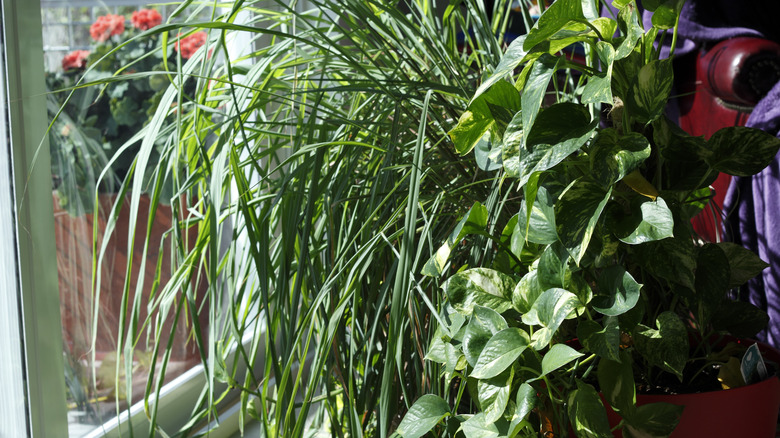Is Lemongrass A Perennial? The Answer Depends On This Environmental Factor
Lemongrass (Cymbopogon citratus) is a herb native to semi-tropical and tropical regions of Asia. It is widely cultivated in tropical climates for its citrus flavor, a popular addition to soups, curries, and teas. The punchy herb also adds a kick to fish and chicken dishes, but if cooking isn't your thing, you can grow lemongrass for its pretty tufts of grass-like leaves that can reach heights of up to 6 feet in a single season. The herb is also widely cultivated for its essential oils, which add an appealing scent to the garden while deterring pests that are repelled by the lemongrass plant.
If you're planning on growing this herb in your garden, you'll need to know how to care for a lemongrass plant, including its climate requirements. The temperature of your region will determine whether or not it can be grown as a perennial. As a tropical and semi-tropical herb, lemongrass is accustomed to high levels of heat all year round. It is not frost-hardy and will not survive through cold winters. However, this doesn't mean you can't have lemongrass in your garden. In cooler climates, you'll need to treat it as an annual or overwinter the plant indoors.
Lemongrass is a perennial in USDA hardiness zones 10 and 11
A perennial is a plant that lives for three years or more. Lemongrass is a true perennial only when grown in conditions that mimic its native habitat. This means the plant requires high levels of heat all year round to survive through the winter, just like it would experience in its indigenous home of semi-tropical and tropical Asia. For those in the U.S., this means lemongrass can be treated as a perennial in USDA hardiness zones 10 and 11, where temperatures remain consistently above 50 degrees Fahrenheit. If you live outside of these zones, lemongrass cannot be treated as a perennial. It is frost-tender so it will die at the first sign of frost and won't grow back the following season.
If you live in USDA hardiness zones 10 and 11, lemongrass is an easy plant to grow and care for. It thrives in sunny spots, though it can tolerate some light shade, and performs especially well in soils that are kept moist but well-draining. If you have the option, plant lemongrass alongside a pond or any water feature where the soil will naturally have a higher moisture content. Lemongrass is a fast-growing herb for your garden that forms dense clumps that you can separate to create more of these aromatic plants in your yard. There are numerous benefits to growing lemongrass. For example, it can help repel snakes naturally and might keep mice out of your yard.
Treat lemongrass as an annual or a houseplant in cooler climates
If you don't live in a warmer climate, you can still grow lemongrass. You'll just need to give it a little more care and attention when the temperatures outside start to drop. When growing this herb in climates that experience frost, you have two options. You can treat lemongrass as an annual plant, which means it will grow from spring each year and die in the fall. To grow lemongrass the following year you'll need to start again with a new plant.
Alternatively, you can keep your lemongrass plant alive in cooler climates by overwintering it. To do this you'll need to dig up the root ball of the herb a few weeks before the first frost is expected. Put the plant into a container and treat it as a houseplant for the duration of the winter, setting it in a sunny and warm spot such as on a south-facing windowsill. Water your lemongrass regularly through the winter, but only once the top few inches of soil have dried out so that the plant does not get overwatered. When the warmer weather returns the following spring and temperatures consistently remain above 50 degrees Fahrenheit, you can move the plant back outside. It may need to be gradually reacclimatized to outdoor life, which you can do by putting the plant outside for a few hours each day before permanently relocating it to the garden.


